Santiago Apostol Parish in Plaridel Bulacan / Plaridel Church/ Quingua Church
After leaving Malolos, we headed to Plaridel, Bulacan to visit another old church dedicated to Saint James the Apostle (Santiago Apostol). The original plan was to visit the Minor Basilica of La Purisima Concepcion but apparently, the church was closed that day and they are not allowing visitors because they were sanitizing the area. Supposedly, Plaridel Church is our last destination for this pilgrimage so we had to change our plans and think of another church nearby Plaridel that we can add on our list.

Just like other churches in Bulacan, Santiago Apostol church is another old and historically-significant church in the province. We were welcomed by its beautiful and unique facade. Like all other churches that were established during the Spanish era, Santiago Apostol Church (formerly known as Quingua Church) started as a visita (chapel) in 1581 and was also under the jurisdiction of the Immaculate Conception Parish of Malolos. It was the Augustinian Friars who founded the place and initially named it as Binto (later the place would be known as Quingua for a very interesting reason). The visita was located in a barrio now called “Lumangbayan” but was soon transferred to its present location across the river Quingua (now known as Angat River) because of frequent flooding.
Encomienda Binto soon became an independent town in 1602. As for the name Quingua, the place was initially a vast forest with so many trees and tall grasses everywhere. Initially very few people lived in the town, and most were closely related. Each group had a leader called “tandis“. Different groups spoke different languages; Pampango, Pangasinan, Ilocano and Tagalog. The missionaries decided to clear the land and establish settlements, from which they could work to bring unity to the people but clearing the area was quite a challenge. The locals led by tandis, however, decided to clear the area to help the friars. When the missionaries went back after seven years to check the area, they were surprised that it was completely cleared.
When they asked the locals, who should they be thanking, they replied “Quing Wawa ding Tagalog po” a Kapampangan dialect stating that the Tagalog are the one responsible and should be credited. Since then, when the friars asked the same question, the locals will reply the same thing and from there, the town eventually named Quingua. Quingua was later renamed as Plaridel in honor of Marcelo H. Del Pilar (Plaridel was his pen name).
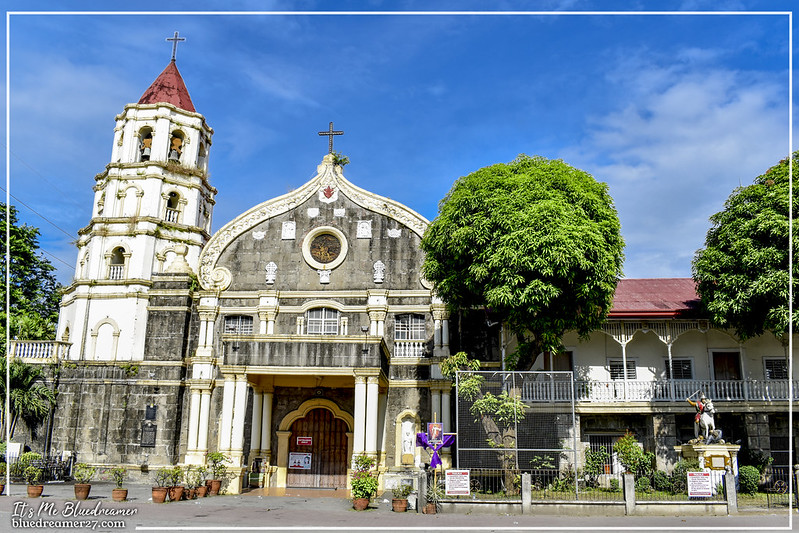
On April 30, 1605 Quingua was officially established as a full pledge Parish and was dedicated under the patronage of Santiago de Matamoro (Saint James the Moor-slayer). A Church was built on the new location starting 1602 and took 15 years to complete. The adobe stones used in the church were from the town of Meycauayan while the bricks used were made at Sitio Nabugtos at Brgy. Sta. Ines.
The church was utterly destroyed in many occasions including a fire in 1605 that was caused by a lightning, another fire incident in 1722, and an earthquake in 1863. History-wise, the town of Plaridel became the site of the infamous Battle of Quingua where the church served as a military hospital and cuartel by the Americans in 1899.
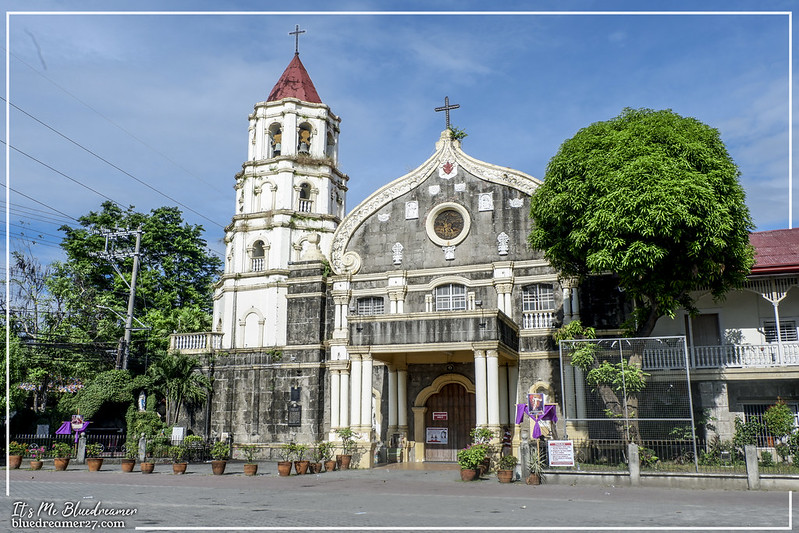
The church welcomes you with a unique facade. The present stone and brick church is barn-style Baroque mixed with Moorish ornamentation. It has a trefoil arch doorway and a very notable pointed arch-shaped pediment. The facade is also richly ornamented with carvings of cherubs, saints and other embellishments.

Statues of the Holy Family outside the church

The pediment of the church’s façade with a rose window featuring the image of Santiago Apostol
Attached to left of the façade is the five-storey bell tower with a quadrilateral base and octagonal upper levels and topped by a cone-shaped dome

It has five bells on the belfry and the biggest one is dedicated to Nuestra Señora de la Consolacion

The church also welcomes you with a stunning interior. It should be noted that the church recently went on a major restoration, particularly its ceiling. The restoration took two years to complete and it went through three major phases. First was to uncover the church trusses, the tirantes or decorative beams, and the zapata or corbel, which support the original ceiling. Second was to add a beautiful Trompe l’oeil-inspired mural on the ceiling. These were painted by Bulacan artists. The last part of the restoration was the application of the palitada.
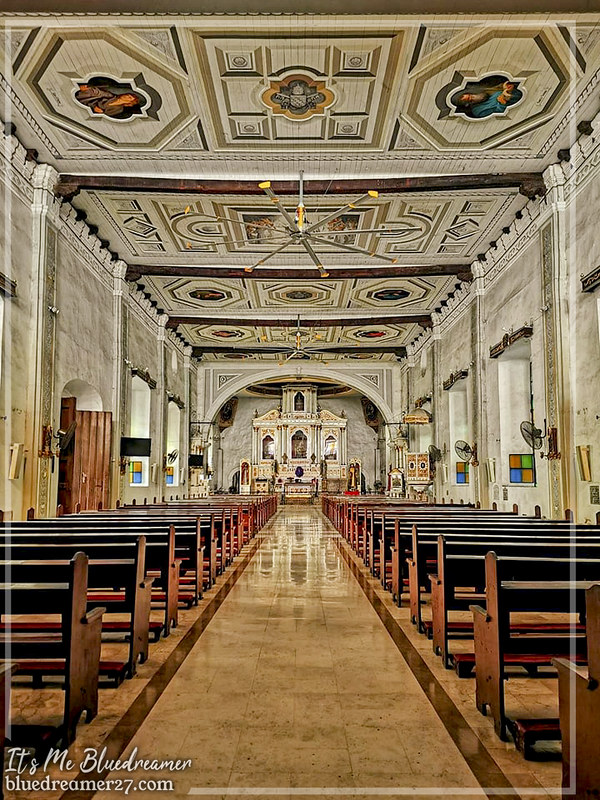
The stunning interior of Santiago Apostol Parish

The main altar
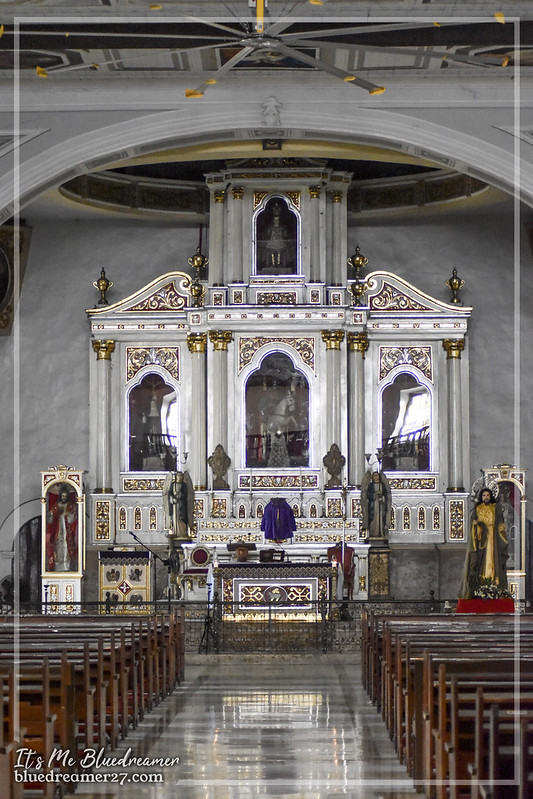
The church also has a two-tiered main altar. The upper level has a single niche with an image of Santo Niño enshrined on it.

The closer look of the retablo mayor
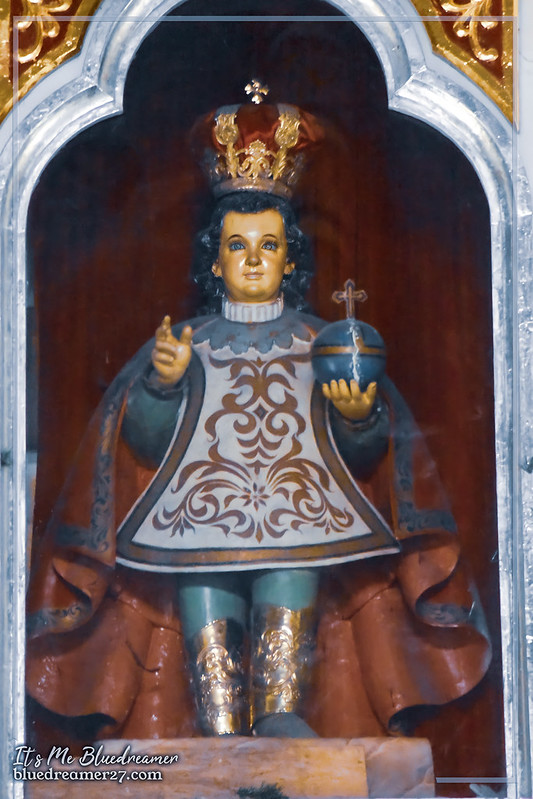
The image of Santo Niño in the main altar
The lower level features Saint James the Apostle (Santiago Apostol) on the center niche above the tabernacle and the image of Santa Monica and Saint Augustine on both sides. There are also separate altars dedicated to the Immaculate Heart of Mary and the Sacred Heart of Jesus.

The image of Saint James the Apostle (Santiago Apostol) on the center niche of the altar
One of the side altars feature the image of Nuestra Señora dela Consolacion Y Correa
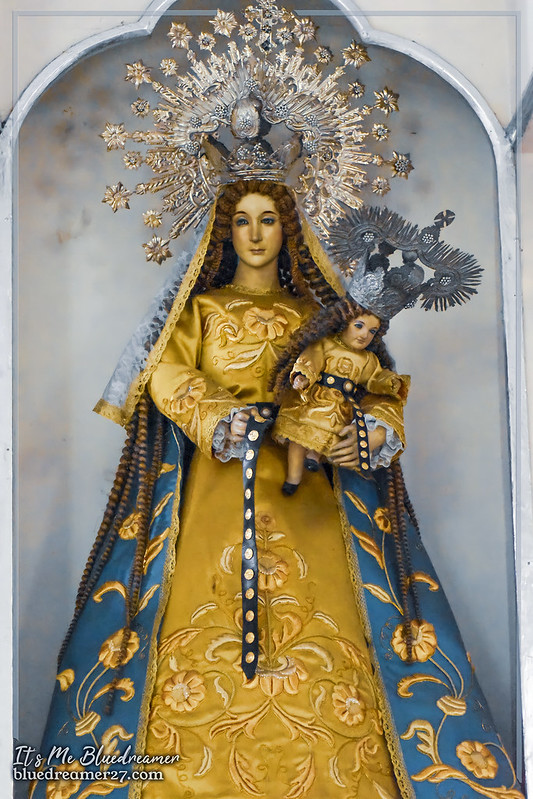
Nuestra Señora dela Consolacion y Correa
The opposite of the side altar features the image of Saint Joseph.
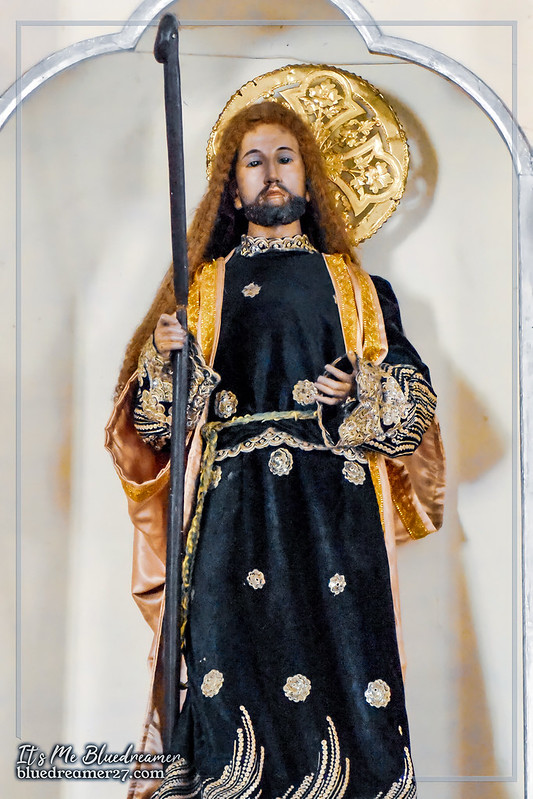
Saint Joseph on the side altar
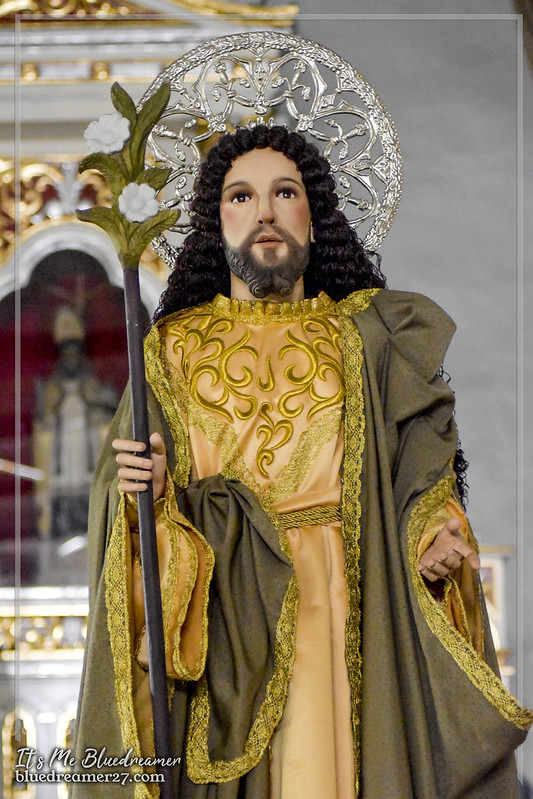
Another image of Saint Joseph
 A Pulpit in Santiago Apostol Parish
A Pulpit in Santiago Apostol Parish
 The corridor
The corridor
 Adjacent to the church is a convent. There’s a very old corridor that leads you to a garden
Adjacent to the church is a convent. There’s a very old corridor that leads you to a garden

A fountain in the church’s garden near the convent
 The statue of Santiago Apostol outside the church
The statue of Santiago Apostol outside the church
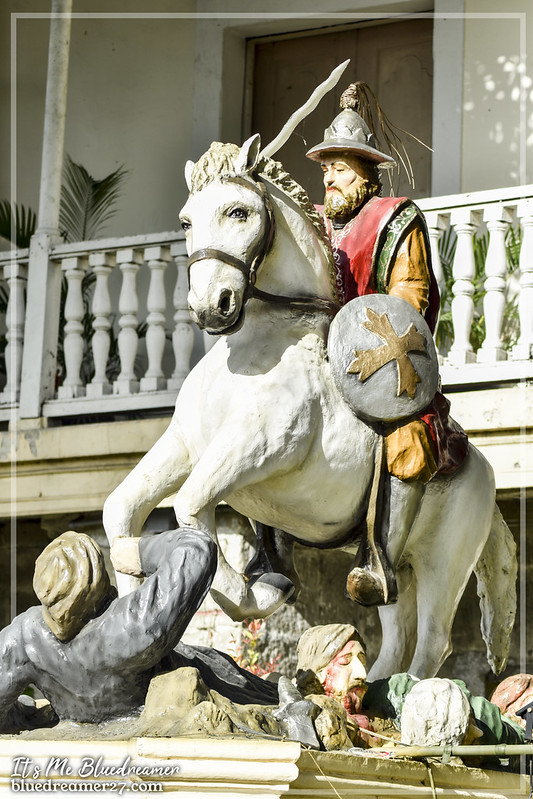
After reciting the 11th and 12th stations of the cross in Plaridel church, we headed next to our last destination in Bulacan. After asking some locals, we were advised to visit the church in Bustos dedicated to Santo Niño and I am going to post it on my next and final entry for this series.
This post is part of my Bulacan Pilgrimage series. Feel free to visit my previous entries
- A Pilgrimage to Bulacan
- Saint Joseph the Worker Parish in San Jose Del Monte, Bulacan
- San Isidro Labrador Parish in Muzon, San Jose Del Monte Bulacan
- Nuestro Señor Jesucristo Parish / Diocesan Shrine of Saint Andrew Kim Taegon
- Saint Andrew Kim Taegon Shrine Museum
- Barasoain Church / Our Lady of Mount Carmel Parish in Malolos
- Museo ng Republika ng 1899
- Minor Basilica and Cathedral of Immaculate Conception/ Malolos Cathedral
- Santiago Apostol Church in Plaridel, Bulacan
- Saint Augustine Parish/ Birhen sa Patio in Baliuag, Bulacan
- Santo Niño de Bustos Parish in Bustos, Bulacan
If you have time, don’t forget to follow me on my social media pages
Facebook Page : It’s Me Bluedreamer
Instagram: @bluedreamer1227
YouTube Channel: Milton Coyne
Sources of Information: Lifestyle Inquirer / iCatholic.PH/ Jar-U.

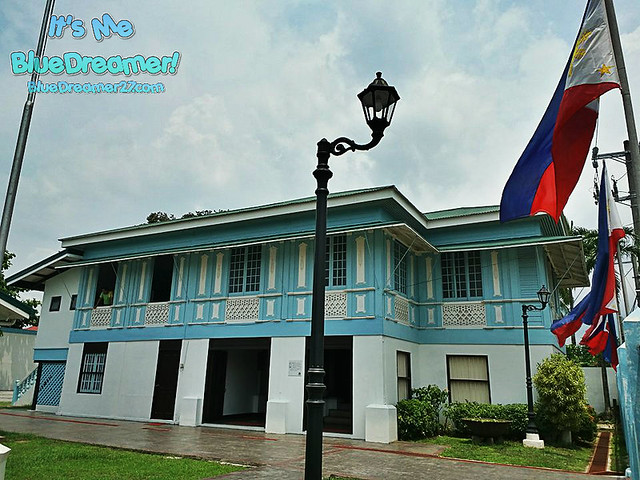


Pingback: Nuestro Señor Jesucristo Parish / Diocesan Shrine of Saint Andrew Kim Taegon in Lolomboy, Bocaue, Bulacan - It's Me Bluedreamer!
Pingback: San Isidro Labrador Parish in Muzon, San Jose Del Monte, Bulacan - It's Me Bluedreamer!
Pingback: Saint Joseph The Worker Parish of San Jose Del Monte, Bulacan - It's Me Bluedreamer!
Pingback: A Pilgrimage in Bulacan - It's Me Bluedreamer!
Pingback: Saint Augustine Parish and the Birhen sa Patio of Baliuag, Bulacan - It's Me Bluedreamer!
Pingback: Saint Andrew Kim Taegon Shrine Museum in Lolomboy, Bocaue, Bulacan - It's Me Bluedreamer!
Pingback: The Historic Barasoain Church of Malolos / Our Lady of Mount Carmel Parish - It's Me Bluedreamer!